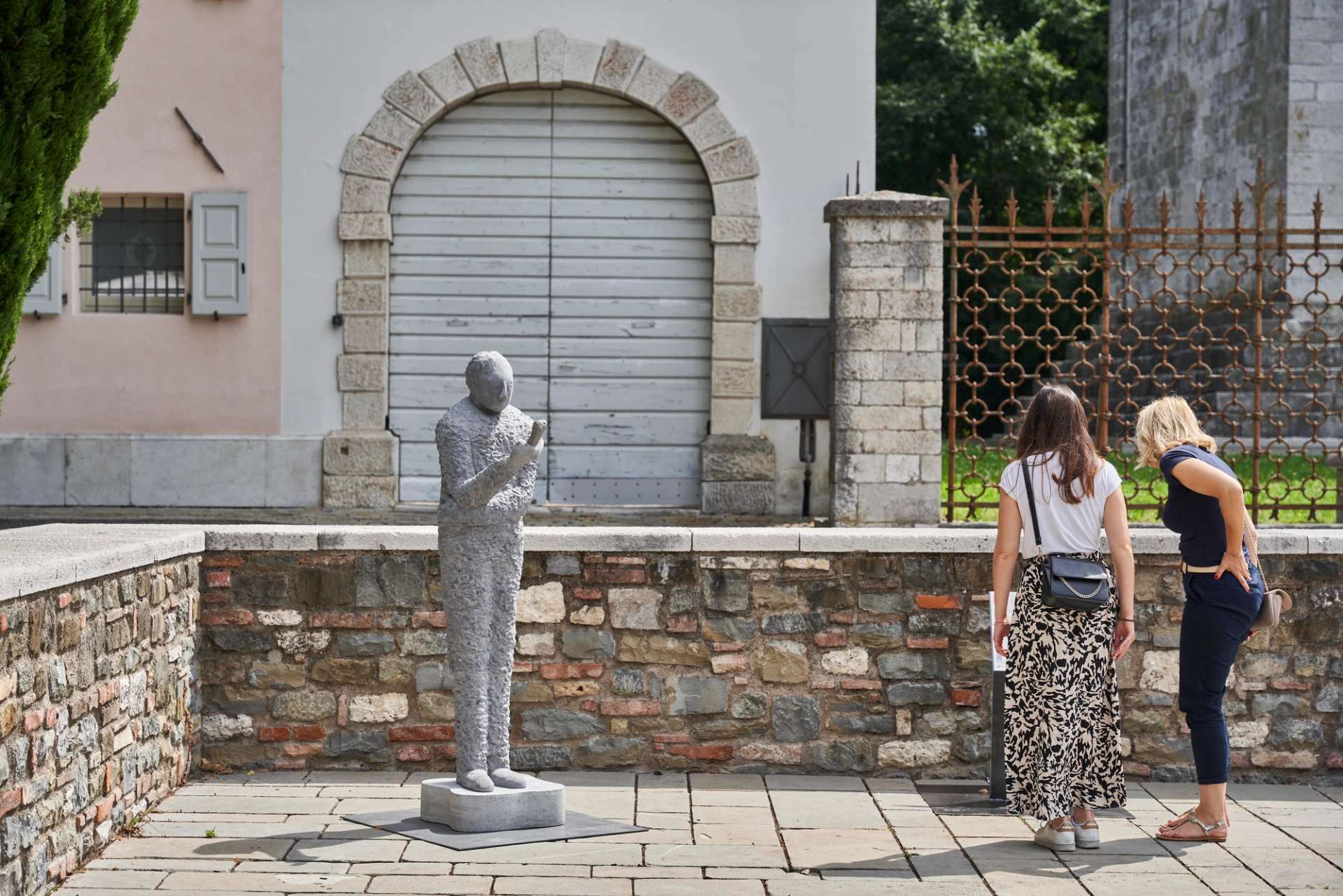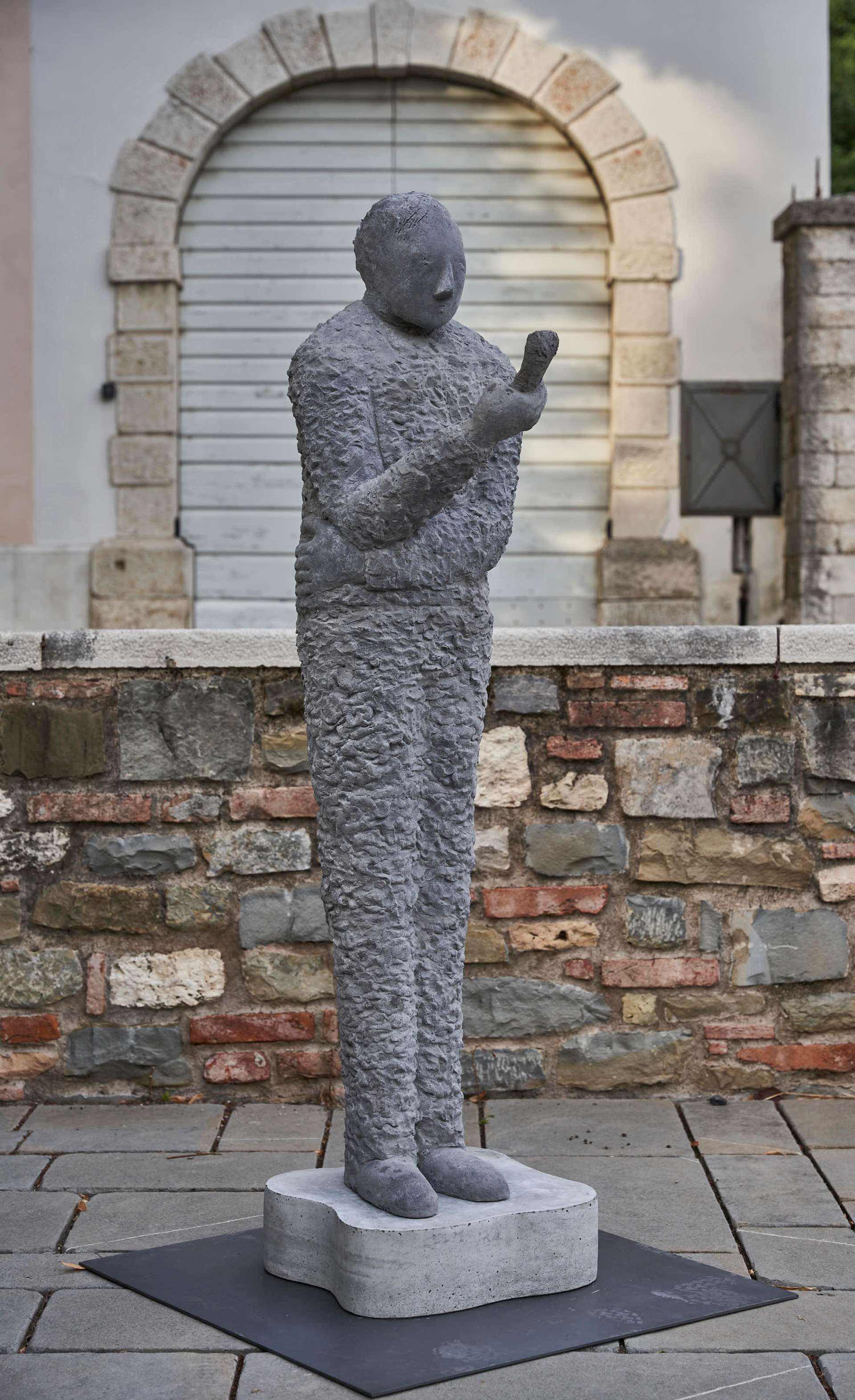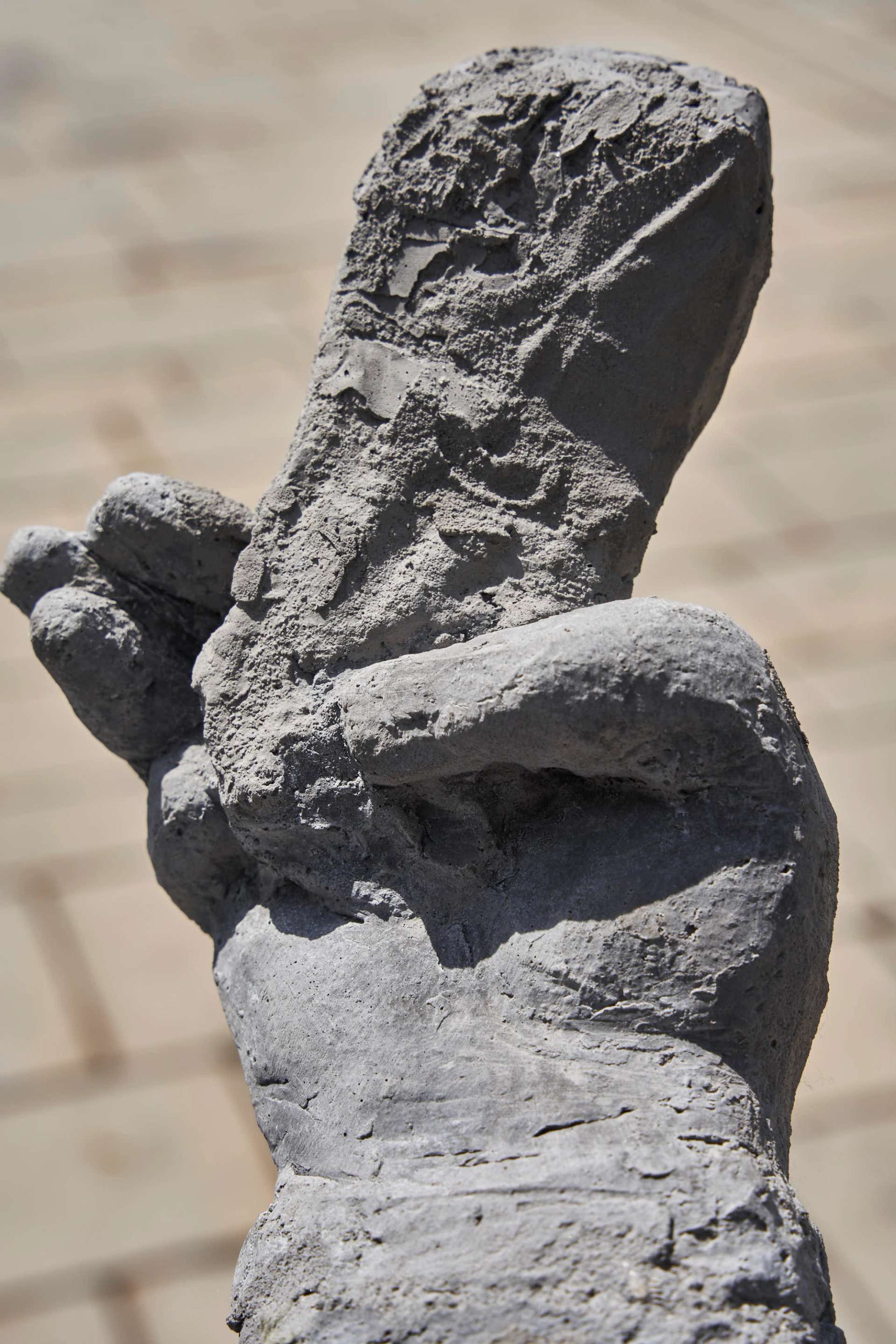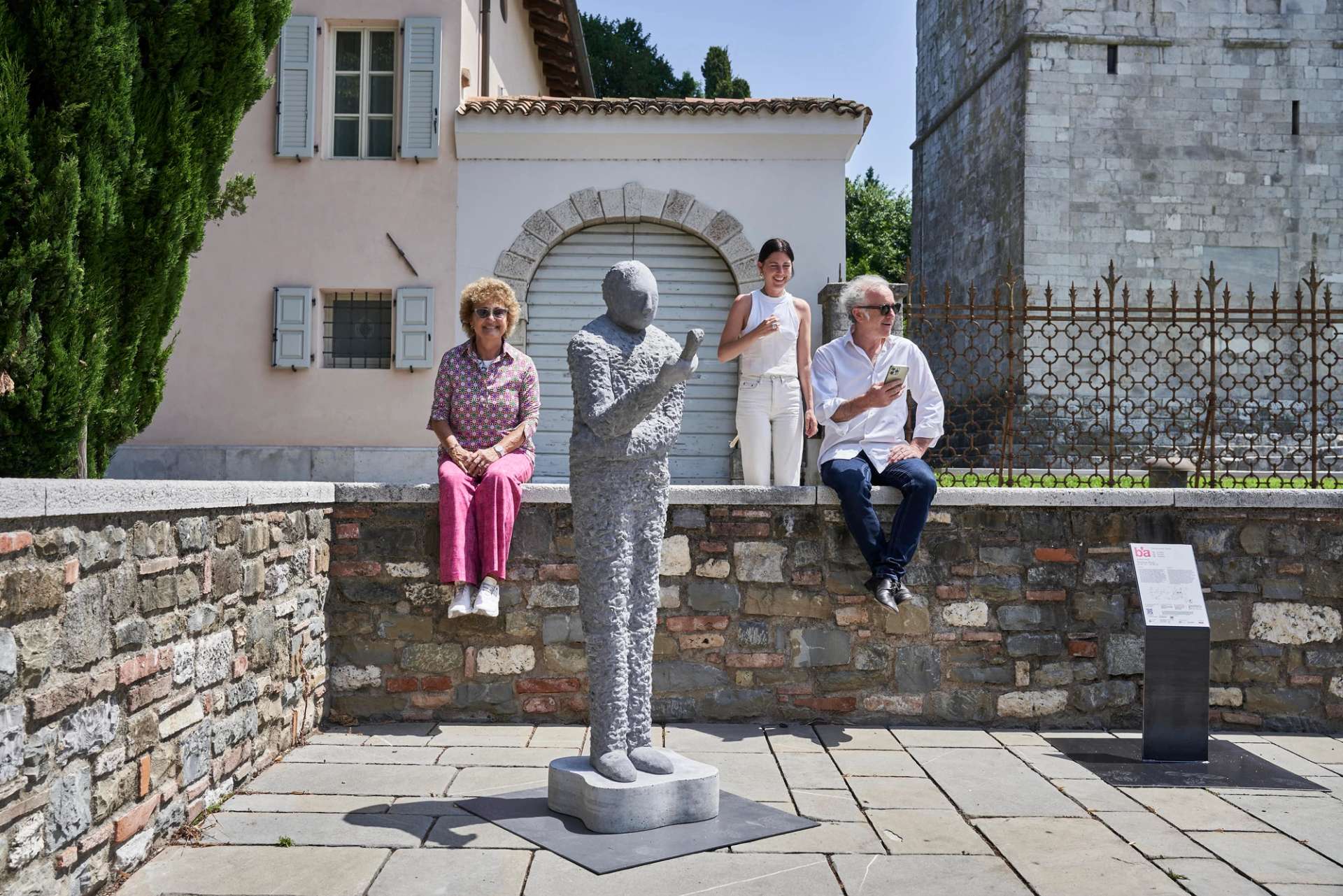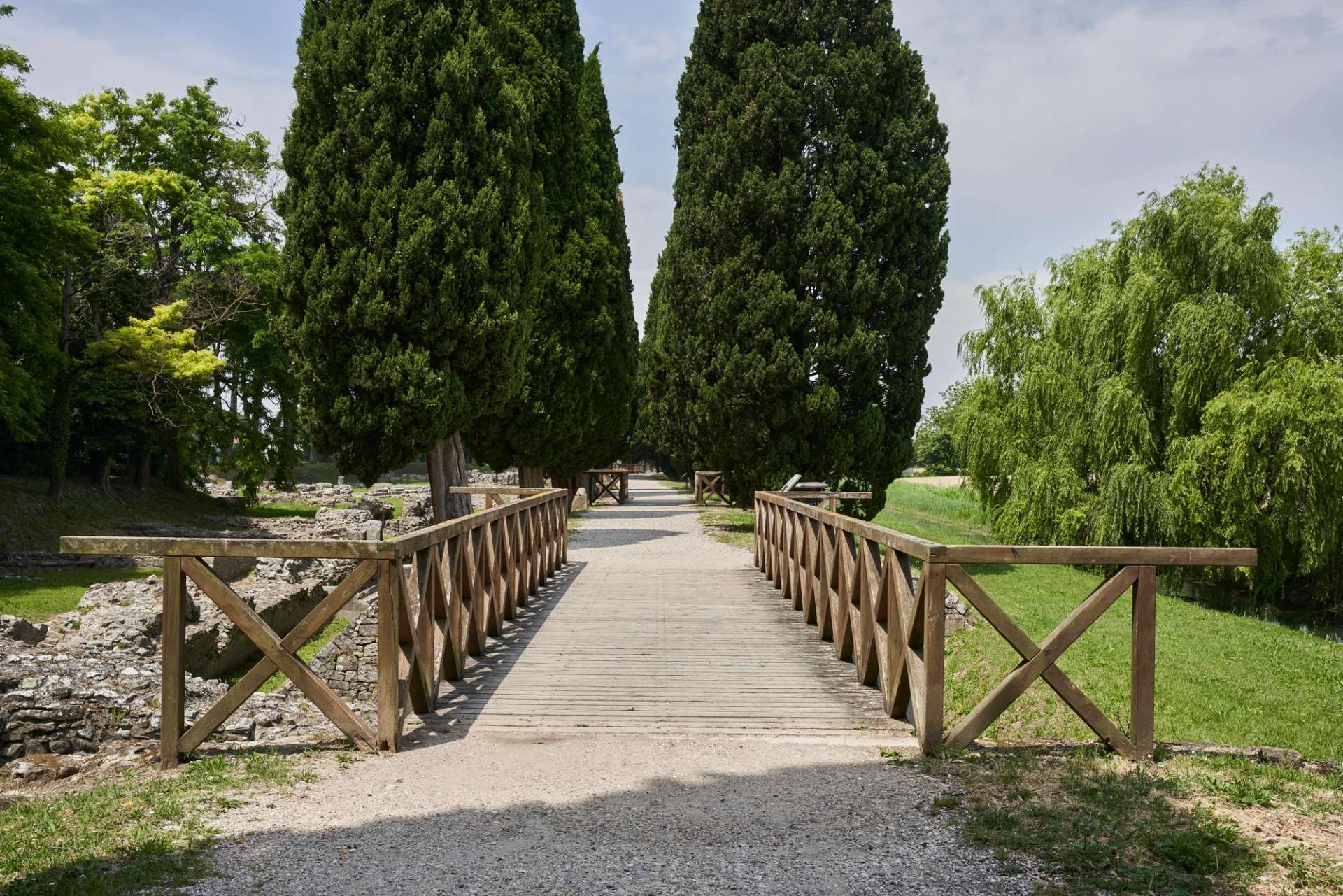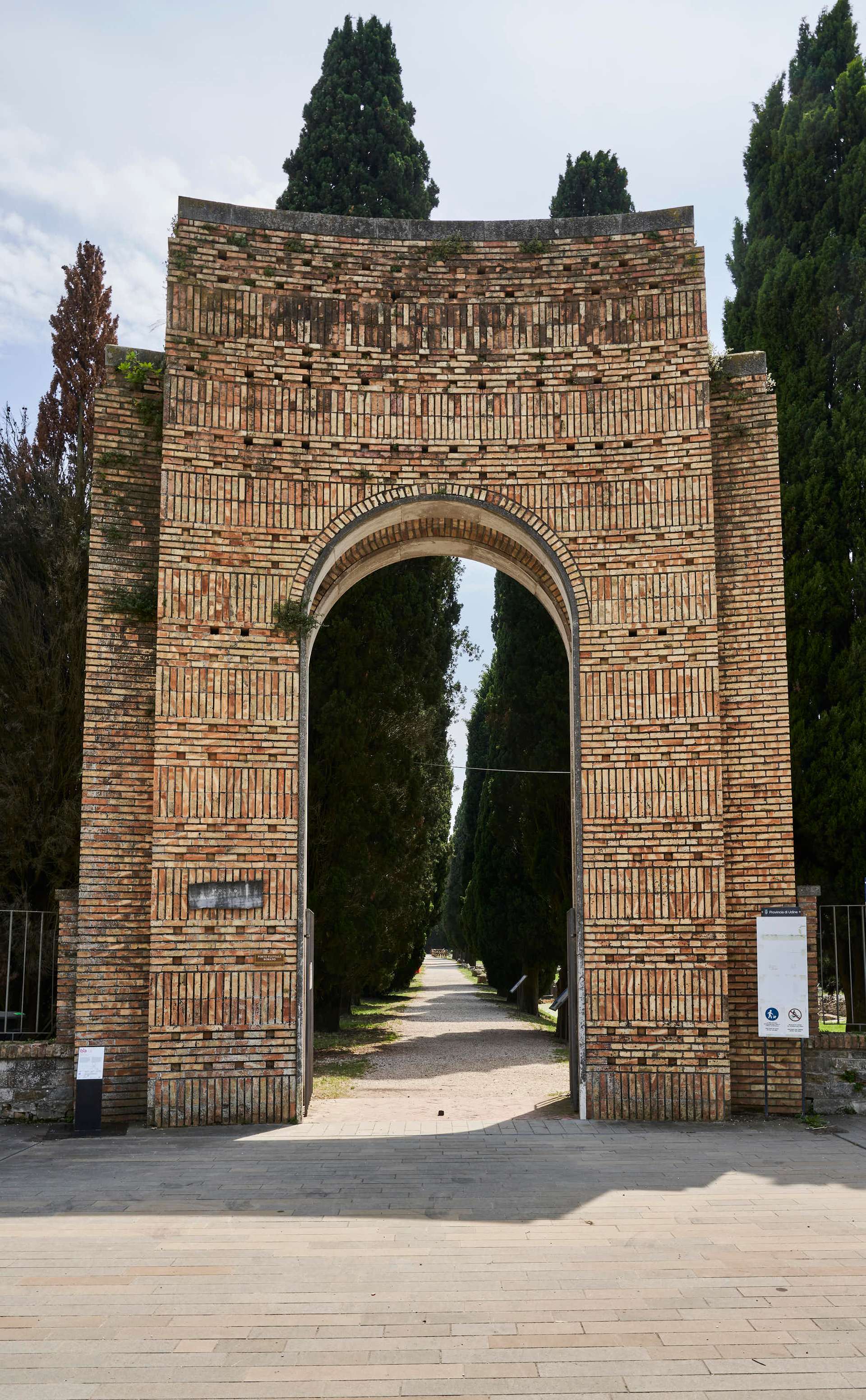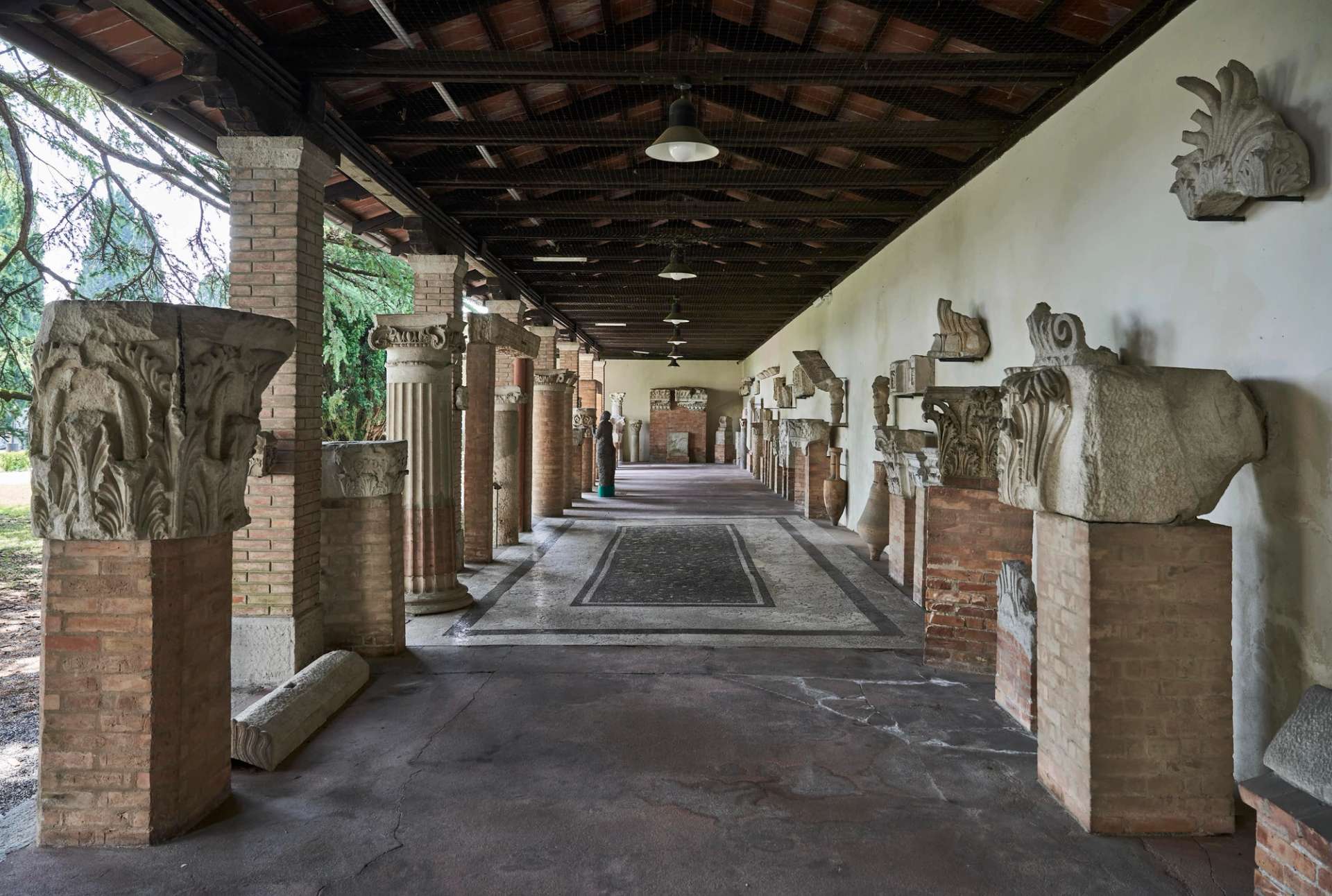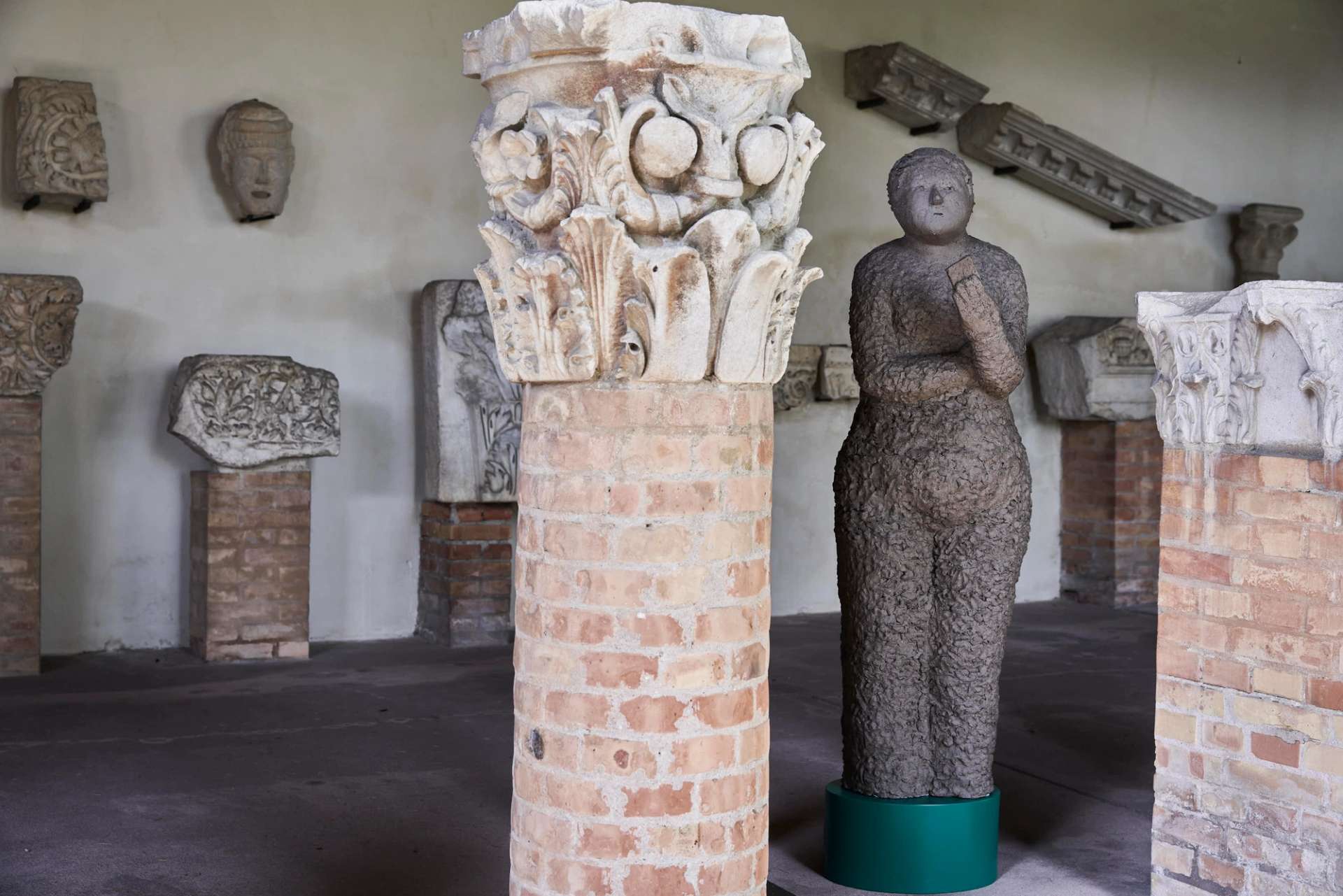Aquileia was one of the Roman Empire’s main ports on the Adriatic Sea. It was a cultural, commercial and military hub to north-eastern Europe. It experienced life as a besieged and Habsburg city, as an important manufacturing centre, and it was the seat of the Patriarchate that was later abolished. Aquileia has been a World Heritage Site since 1998.
Judith Hopf’s art is a constant dialogue and discussion examining the social system and art. Born in 1969, she lives and works in Berlin, ranging between sculpture, installation, performance and video, inserting the theme of humour, the domestic and the absurd into the space of art.
Her work aims to provoke gaps and openings in relations of power and order.
In Aquileia, one of the peninsula’s major archaeological sites, the artist wants to compare her representation of the contemporary world with that of the past, the ancient and classical civilisation. Two sculptures in clay and cement, Phone User 1 and Phone User 4, represent human figures while using a smartphone: an everyday, common action, just as the shepherd herds sheep and fishermen use fishing rods in the myth of Jonah, narrated by the large mosaic in the Basilica.
The Via Sacra (Holy Way) is instead the location where the artist imagines her work Rooted Around (2023), an audio collage that can be used by means of smartphones, in which the mosaic’s bestiary comes to life and accompanies visitors along the walk, with sounds, noises, field recordings and the artist’s narrating voice. This audio work features a piece of music by the artist Moondog and it quotes Address of the Beasts by poet Wystan Hugh Auden, and botanist Stefano Mancuso.
ㅤ
ㅤ
Permanent works:
Judith Hopf, Rooted Around, 2023. Experimental sound collage, 13min 34sec.
The artist invites the public to listen the sound work by walking along the via Sacra and connecting your device to the headphones.
ㅤ
ㅤㅤ
Exhibited works:
01. Judith Hopf, Phone User 4, 2021-2022. Cement, 173 x 44 x 52 cm.
Piazza Capitolo
ㅤ
02. Judith Hopf, Phone User 1, 2021, clay, steel plinth, 165 x 46 x 34 cm.
Museo archeologico nazionale di Aquileia, Via Roma 1
ㅤ
I OBSERVED HOW WE VISITORS GRIPPED OUR PHONES, TAKING PICTURES OF THE MOST WONDERFUL MOSAICS AND OTHER ARCHITECTURAL REMAINS FROM ROMAN TIMES IN AQUILEIA. SO… WHAT IF OUR PHONES COULD NOT ONLY “TAKE” BUT ALSO “GIVE BACK” SOME EXPERIENCE HERE, TO SHARE IN RELATION TO THE PAST AND PRESENT
Judith Hopf (Karlsruhe, Germany, 1969) lives and works in Berlin. Ranging between video, performance, sculpture and installation, her practice aims to provoke gaps and openings in relations of power and order, inserting the theme of slapstick humor, the domestic and the absurd into the space of art. Self-evident and seemingly infallible hierarchies are mocked and overturned, fostering a spirit of non-conformity that challenges our preconceptions and stereotypes. Using her surroundings together with material and everyday objects as a creative starting point, Hopf's formal questions playfully translate into political and social questions. She has participated in solo exhibitions at major institutions such as: Bétonsalon - Centre d'art e de recherche and Le Plateau, Frac Île-de-France, Paris (FR, 2022); KW Institute for Contemporary Art, Berlin (DE, 2018); Statens Museum for Kunst, Copenhagen (DK, 2018); Hammer Museum, Los Angeles (USA, 2017); Museion, Bolzano (IT, 2016); Neue Galerie, Kassel (DE, 2015); PRAXES Center for Contemporary Art, Berlin (DE, 2014); Fondazione Morra Greco, Naples (IT, 2013); Studio Voltaire, London (UK); Badischer Kunstverein, Karlsruhe (DE); Malmø Konsthal, Malmö (SE, 2012). She also participated in the Biennale Gherdëina (IT, 2022), La Biennale de Montréal (CA, 2016), 8th Liverpool Biennal (UK, 2014); dOCUMENTA 13, Kassel (DE, 2012). She is a lecturer in Fine Arts at the Städelschule Art Academy in Frankfurt.
ONE OF THE MAIN ROMAN ARCHAEOLOGICAL SITES ON THE PENINSULA, THE ARTIST PRESENTS AN INTERVENTION COMPOSED OF A SOUND WORK AND TWO SCULPTURES - A MAN AND A WOMAN CAUGHT USING A SMARTPHONE - THAT INVESTIGATES THE RELATIONSHIP BETWEEN CONTEMPORARY AND ANCIENT, BETWEEN THE EVERYDAY AND THE ARCHAEOLOGICAL FIND
Aquileia is a historic city founded by the Ancient Romans in 181 B.C. and today it has a population of about 3,300 people.
A World Heritage Site since 1998, it was one of the most important Adriatic ports of the Roman Empire, the starting point of the main trade, cultural and military routes for expansion into north-eastern Europe. It was also an important agricultural and manufacturing centre, with activities including working semiprecious stones and amber from the Baltic. Its power declined in 452 A.D. with the siege of Attila's Huns, but between the 11th and 14th centuries it experienced a new period of great splendour as the seat of the Patriarchate. Before the latter was abolished in 1751, in its heyday it stretched from Lake Como to Hungary. In 1420 Aquileia came under Venetian rule, then it passed to the Hapsburg Empire. Only in 1918 did it become Italian after the First World War.
Aquileia is a city of art that deserves to be discovered. Its landmarks are linked to the splendours of the Roman Empire, including the exceptional Aquileia Archaeological Area and the Patriarchal Basilica, the most important in northern Italy. There are numerous outdoor activities promoted in the area, which also boasts a two-thousand-year-old wine and culinary tradition, with Friulian recipes.

